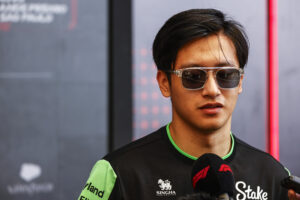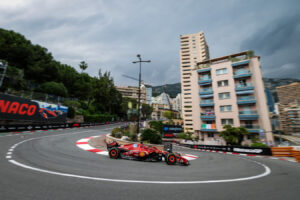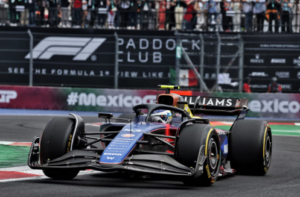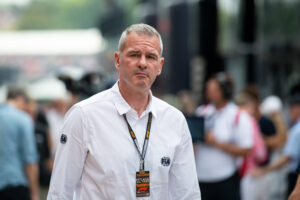In honour of Black History Month in the UK, this is Part One in a three-part series that highlights the life and career so far of F1’s first-ever black driver, Sir Lewis Hamilton.
Sir Lewis Hamilton was born on 7 January 1985 in Stevenage, Hertfordshire. Son to Anthony Hamilton, a black man of Grenadian descent and to a white British woman, Carmen Larbalestier, the now 7 time World Champion was bold to dare to dream of making it in a predominantly white sport.
Remote Control Cars
When he was five, his father bought him a radio-controlled car when he was five. Hamilton finished second in the national BRCA championship the following year against adult competition.
It was the start of the dream for the young Brit. A love for racing sparked.
“I was 6 years old here when I earned my first two trophies remote control car racing. These were some the best days of my life spending time with my dad”
Hamilton’s Karting Career & The McLaren Call-Up
With a new passion brewing inside his young heart, Hamilton’s father bought him a go-kart for Christmas when he was six. Anthony Hamilton promised to support his son’s racing career as long as Lewis worked hard at school.
This decision did not come without sacrifice. Working towards a career in Formula One is no easy feat, nor is it cheap. Talent plays a big part in where one can land, but in a sport as expensive as F1, money and connections can often take you far. Not only was Hamilton from a poor family with no motorsport history, but he was also black – yet another setback.
“We started with nothing, he had 4 jobs to keep me racing at one time and I slept on the couch. We dreamt of doing something, something so far out of reach, becoming an F1 driver. For a family with no money, we may have looked and sounded crazy. People would laugh at us, call us names, joke about us but we kept our heads down. We did our fighting with actions on track.”
It was in 1993 when Lewis Hamilton began his karting career. Despite the odds working against him, he quickly began winning races and cadet class championships.
Two years later, at ten, he became the youngest driver to win the British Cadet Karting Championship. It was in that same year that the famous interaction between the then McLaren Formula One team boss Ron Dennis and young Hamilton at the Autosport Awards. Lewis who wanted an autograph confidently said;
“Hi. I’m Lewis Hamilton. I won the British Championship and one day I want to be racing your cars.”
Dennis then wrote in Hamilton’s autograph book; “Phone me in nine years, we’ll sort something out then.”
“Phone me in nine years, we’ll sort something out then…” 📞
The rest, as they say, is history.⁰⁰🐐 @LewisHamilton pic.twitter.com/BiYW09iQgE
— McLaren (@McLarenF1) November 2, 2022
Following his second Super One series and British Championship wins, in 1998, Lewis received a call from Dennis. Dennis called to offer the Briton a role in the McLaren driver development programme. The contract included an option of a future F1 seat, which would make Hamilton the youngest driver to secure a contract that later resulted in an F1 drive – the first of many F1 records he broke.
In 1999, Hamilton continued competing in the Intercontinental A (ICA) before moving on to compete in the Formula A and Formula Super A ranks in 2000 and 2001. In 2000, he won the European Championship impressively with maximum points. During those years he was racing his teammate was Nico Rosberg, who would be his future teammate at Mercedes from 2013 to 2016 in F1.
Formula Renault
Lewis began his single-seater car racing career in the 2001 British Formula Renault Winter Series. He finished 7th in the standings. This earned him a full 2002 Formula Renault UK seat with Manor Motorsport, finishing fifth overall. He remained with Manor for another year, and this time around he won the Championship.
Having already claimed the championship, Hamilton missed the last two races of the season to make his debut in the season finale of the British Formula 3 Championship. In his first race, he was forced to retire from the race due to a puncture. In the second, he crashed out and was taken to hospital after a collision with teammate Tor Graves.
Still with Manor, Lewis made his debut in the 2004 Formula 3 Euro Series, finishing the season 5th. Also in 2004, he won the Bahrain Formula Three Superprix and competed in the Macau Formula Three Grand Prix.
Formula Three
At this point, Williams had come close to signing Hamilton. Unfortunately, the deal did not go through because BMW – their engine supplier at the time – would not fund him. Fortunately for the driver, Hamilton eventually re-signed with McLaren. Then McLaren executive and future CEO Martin Whitmarsh, the person responsible for guiding Hamilton through the team’s young driver programme, there were disagreements with his father about Lewis’ career moves, which ultimately led to the tearing up of Lewis’ contract. However, Lewis eventually called Whitmarsh and re-signed with the team.
With that came a great opportunity. For the first time in his career, Hamilton got to test for McLaren in late 2004 at Silverstone.
Hamilton moved to the reigning Euro Series champions team ASM for the 2005 season. There he dominated the championship, winning all but 5 of the 20 rounds, finishing 1st in the standings. In 2005 he also won the Marlboro Masters of Formula 3. When the season concluded, British magazine Autosport featured him in their “Top 50 Drivers of 2005” issue, ranking then 20-year-old Hamilton 24th.
Hamilton’s Road to the GP2 title
In 2006, Hamilton joined GP2, racing in ASM’s sister GP2 team, ART Grand Prix. The rookie had to go against drivers like Nelson Piquet Jr, Timo Glock and Lucas Di Grassi. Once again, despite the odds though, Hamilton won the GP2 championship in his first season. It wasn’t the easiest run to the title, with the driver only winning 5 out of 21 races.
Halfway through the season, the British rookie led the way, becoming a title favourite alongside Piquet Jr. Winning in Monaco and in both races in Silverstone, his home circuit, gave him a 26-point lead over Piquet before Round 9 of 11 in Hungary. However, things started to falll apart for Lewis. A perfect weekend for Piquet Jr saw him secure pole position, two wins and two fastest laps. A drive that reduced the gap to 11 points heading into Turkey. The pressure on Hamilton only grew after the Brazilian had taken pole position and a win at the feature race in Istanbul. The gap was then reduced to only 6 points with three races left in the season.
However, like a true future champion, Lewis Hamilton drove in a legendary manner on an unforgettable day, the 27th of August 2006.
The comeback of legends
After the gap had reduced massively, Hamilton asked his team to trim the wing angle of the car. It was a shocking request considering the nature of Instanbul Park. ART’s mechanics warned the young driver, but Hamilton took the risk. As expected, he lost downforce and wound up spinning. On Lap 2, Hamilton lost control of his car at turn 4 and spun. Fortunately, he was able to continue with his race, or title hopes would have died. Unfortunately, though, Lewis dropped to 19th place, so hopes did look lost.
But as a legend in the making, the young Brit had one of the greatest comebacks in the history of the second tier. After managing to pass three drivers before the end of Lap 2, Hamilton was fifth by Lap 14. Piquet was just one place above him, in arm’s reach. Inevitably, an epic battle conjured between the Brit and the Brazilian, along with Timo Glock who was in third. Lewis managed to overtake them both.
Fellow countryman Adam Carroll was overtaken by Lewis on the last lap. It was a great recovery drive from P19 to P2. Not only that, but he also set an impressive fastest lap 0.854 seconds quicker than that of anyone else.
What made his performance that day all the more impressive was that he displayed a natural ability that has always set him out as a special and unique talent. It was also a brilliant display of his intelligence. He went against the team in choosing the low downforce option, adapted his driving style within a lap to suit a set-up he had not tested, and worked his way up the field to finishing P2.
Glock had managed to hold off Piquet for fourth, and Hamilton left Turkey with a 10-point lead over Piquet in the championship before the final round in Monza, where Hamilton then clinched the GP2 title.
The chance for F1
Coincidentally, after a successful and impressive GP2 season by Lewis Hamilton. there was a vacancy at McLaren. Juan Pablo Montoya was moving to NASCAR and Kimi Räikkönen to Ferrari. After months of speculation on whether Hamilton, Pedro de la Rosa or Gary Paffett would be paired with defending champion Fernando Alonso for 2007, Lewis Hamilton was confirmed as the team’s second driver. The GP2 champion was informed of McLaren’s decision at the end of September. The news however was not made public for nearly two months out of fear that it would be overshadowed by Michael Schumacher’s retirement announcement.
The rest, is history.






